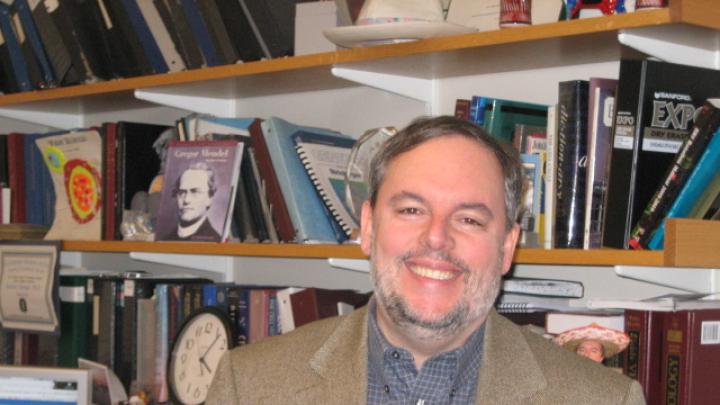In a paper published last week in the journal Cell, researchers at Harvard Medical School shed light on a potentially critical factor in cancer development: the massive genomic abnormalities long observed in cancer cells. The extensive gene additions and deletions present in tumors have puzzled scientists for decades, but amid the seeming chaos, the scientists—led by Stephen Elledge, Mendel professor of genetics and of medicine—found consistent patterns of change: some genes and chromosomes are frequently missing or duplicated in cancer cells, and the new study suggests that these changes contribute directly to cancer’s development.
In a cancer cell, the genome’s typical order is upended. Normally, genes have precise locations on the long DNA structures called chromosomes, but the genomes of cancer cells have undergone a kind of molecular game of cut-and-paste: vast stretches of DNA are often rearranged or deleted altogether in large-scale mutations that would be fatal to most cells. In humans, for instance, the presence of a third copy of chromosome 21 causes Down’s syndrome, and a gain or loss of other chromosomes—an abnormal condition called aneuploidy—usually causes miscarriage long before birth.
All the more surprising, then, that cancer cells—wild proliferators, evolutionary victors at the cellular scale—are frequently aneuploid or even polyploid, carrying entire extra sets of 23 chromosomes. These massive genomic changes present researchers with a chicken-and-egg dilemma: does this genomic instability contribute to cancer, or is it simply a byproduct of cellular processes operating out of control?
The explanation outlined in the recent study relies on the traditional understanding of cancer as a sort of genetic tug-of-war. Roughly put, the disease develops when cancer-promoting oncogenes, normally responsible for functions like growth or repair, overwhelm the tight controls exerted by tumor-suppressor genes that keep cell proliferation in check. Elledge’s team argues that the genomic rearrangements in cancerous cells tip the balance in favor of the disease’s development—by deleting regions of the genome that carry tumor-suppressor genes, for instance, or generating extra copies of oncogenes.
To test this hypothesis, the researchers studied published databases containing more than a million cancer-associated mutations—mutations that had presumably helped oncogenes win the tug-of-war. Not all mutations are alike. In the genetic code, some changes are synonymous, or neutral, whereas others carry far more serious chemical consequences, usually impairing the gene’s function—the difference, in essence, between getting a paper cut and losing an arm.
By analyzing where the most severe mutations tended to occur, the researchers were able to infer genes’ role in the context of the disease; for instance, known tumor-suppressor genes were more often the targets of disabling mutations than their oncogene counterparts. The team extrapolated these mutational patterns to the entire genome, placing each gene on a spectrum between tumor-suppressor and oncogene: determining, in other words, its side in the genetic tug-of-war and the strength of its effect.
Using these functional scores, the research team could predict whether neighboring blocks of genes, or even entire chromosomes, would have a net positive or negative effect on cancer’s development. The results: the calculated effects correlated strongly to the observed patterns of large-scale genomic change. The seemingly chaotic cut-and-paste, the team concluded, serves to promote disease development.
The study complicates a longstanding theory of cancer evolution. All human genes occur in duplicate, one copy from the mother and one from the father, and the traditional “two-hit” hypothesis argues that for major cellular changes to take place, both copies need to be knocked out—a rare event. In familial cancers, for instance, an individual is predisposed to develop the disease by inheriting one dysfunctional copy, making it more likely that the critical second mutation will be reached.
But the new study suggests that even though some mutations may function as powerful on-off switches for critical genes, subtler changes—an extra or missing gene copy, for instance—can also have important effects. The authors make a topographical comparison, arguing that research thus far has discovered only the most potent drivers—the mountains—of cancer evolution, with many foothills yet to be explored. Cancer treatment, it seems, may face a more complex disease landscape than previously imagined.








